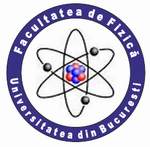| |
 |
UNIVERSITY OF BUCHAREST
FACULTY OF PHYSICS Guest
2025-10-05 22:28 |
 |
|
|
|
Conference: Bucharest University Faculty of Physics 2025 Meeting
Section: Atomic and Molecular Physics. Astrophysics. Applications. Optics, Spectroscopy, Plasma and Lasers
Title:
optimization of secondary particle production from laser wakefield accelerated electrons
Authors:
Maxim ANDRONIC, Vojtěch HORNY, Mihaela PÂRVU
Affiliation:
1) Extreme Light Infrastructure-Nuclear Physics (ELI-NP)
2) University of Bucharest, faculty of physics
E-mail
maxandronic.phys@gmail.com
Keywords:
Laser Wakefield Acceleration, Electrons, Secondary particles, Optimization, Simulations.
Abstract:
This work presents an investigation into the optimization of secondary particle production—specifically photons and neutrons, utilizing electrons accelerated in a novel, highly efficient regime of the Laser Wakefield Acceleration (LWFA) mechanism. Using both calculated electron spectra extracted from Particle-In-Cell simulations and also idealized monochromatic beams, we simulate the interaction of electrons with high-Z (lead) converters through the FLUKA Monte Carlo code. The study aims to identify optimal parameters, including plasma length (correlated with electron energy spectra over time) and converter thickness, to maximize bremsstrahlung photon yield and photoneutron production via Giant Dipole Resonance. For a laser system with 1.5 J energy, 100 TW power, our results show peak conversion efficiencies of 8% laser-to-photon and 1.5×10⁸ neutrons per shot (behind the converter), with an optimal converter length of 1.0 cm for photons and 4.1 cm for neutrons. The findings suggest the feasibility of a compact, laser-driven neutron source suitable for applications in imaging, materials analysis, and nuclear science, especially considering a possible 1Hz high repetition rate.
References:
Horný, V., Bleotu, P. G., Ursescu, D., Malka, V., & Tomassini, P. (2024). Efficient laser wakefield accelerator in pump depletion dominated bubble regime. Physical Review E, 110(3). https://doi.org/10.1103/PhysRevE.110.035202
Acknowledgement:
All the simulations were performed on KAROLINA supercomputer supported by the Ministry of Education, Youth and Sports of the Czech Republic through the e-INFRA CZ (ID:90254).
|
|
|
|

